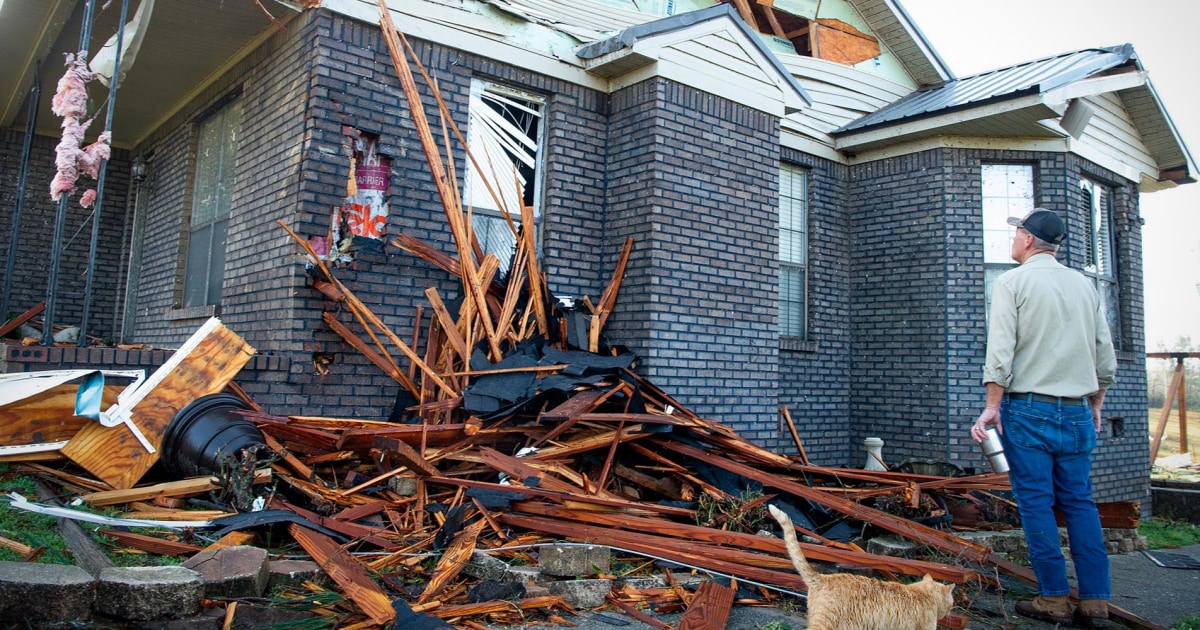Devastating Storms and Tornadoes Claim 42 Lives Across the U.S.
A series of catastrophic storms and tornadoes have recently swept across the United States, leading to a heartbreaking toll of 42 lives lost. As communities band together to navigate the wreckage and begin the arduous process of recovery, the devastating impact of these natural disasters is laid bare. The storms have not only claimed lives but have also left behind a trail of destruction that will take years to heal. In this article, we delve into the events that unfolded, the responses from affected communities, and the broader implications of such extreme weather phenomena.
Understanding the Storms and Tornadoes
The storms that struck were part of a larger weather system that swept through multiple states, unleashing powerful tornadoes and severe thunderstorms. Meteorologists have indicated that the conditions leading to such devastating storms were fueled by a combination of warm, moist air colliding with colder, drier air, a recipe that often results in violent weather.
As these storms developed, they moved rapidly, catching many communities off guard. Tornadoes, characterized by their funnel-shaped clouds and destructive winds that can exceed 300 mph, wreaked havoc in their paths, leveling homes and uprooting trees. The sheer force of these storms serves as a grim reminder of nature’s unpredictability and power.
The Human Cost of Natural Disasters
As the news of the 42 lives lost spread, it became clear that the impact of these storms extends far beyond the immediate destruction. Families are mourning their loved ones, and communities are grappling with the emotional and psychological toll of such tragedy.
- Community Support: In the aftermath, local organizations and volunteers have mobilized to provide support to those affected. Food banks, shelters, and counseling services are being set up to assist families in need.
- Government Response: Federal and state authorities have stepped in to assess the damage and provide financial aid to affected regions. Emergency declarations have been made to expedite recovery efforts.
- Long-Term Recovery: The road to recovery will be long. Many residents face the daunting task of rebuilding their homes and lives amidst the emotional scars left by the storms.
Preparing for Future Storms
The devastating storms and tornadoes that have claimed lives across the U.S. also raise critical questions about preparedness and resilience in the face of climate change. As weather patterns become increasingly unpredictable, communities must prioritize measures to protect their residents.
- Emergency Preparedness Plans: Local governments should develop and regularly update emergency response plans that include clear communication strategies and evacuation routes.
- Public Awareness Campaigns: Educating the public about the risks associated with severe weather can empower individuals to take proactive measures, such as creating emergency kits and staying informed through weather alerts.
- Infrastructure Improvements: Investing in robust infrastructure that can withstand severe weather events is crucial. This includes reinforcing buildings, improving drainage systems, and ensuring that power lines are buried or shielded.
The Role of Climate Change
Another important aspect to consider in the wake of these devastating storms is the role of climate change. While tornadoes have always been a part of the American landscape, scientists are increasingly linking the frequency and intensity of severe weather events to changing climate conditions.
As global temperatures rise, the atmosphere can hold more moisture, creating conditions that may lead to more intense storms. This means that areas previously considered safe from such disasters may find themselves unprepared for the onslaught of severe weather. It is imperative for policymakers and scientists to collaborate on strategies that mitigate these risks and protect vulnerable communities.
Stories of Resilience
Amidst the devastation, stories of resilience and hope continue to emerge. Communities are coming together in remarkable ways, showcasing the human spirit’s strength in the face of adversity.
- Neighbors Helping Neighbors: In the hardest-hit areas, local residents have banded together to support one another, sharing resources and providing assistance to those who lost everything.
- First Responders and Volunteers: Emergency responders have risked their lives to save those trapped in debris, while volunteers have worked tirelessly to distribute food, water, and supplies.
- Inspirational Recovery Stories: Individuals who have lost homes are already discussing plans for rebuilding, demonstrating a determination to rise from the ashes stronger than before.
Looking Ahead
The storms that have claimed 42 lives across the U.S. serve as a stark reminder of nature’s fury and the importance of community resilience. As recovery efforts unfold, it is essential for all of us to reflect on our preparedness and the steps we can take to minimize the impact of future storms.
Ultimately, while the scars of this disaster will linger, the strength of the human spirit shines through. Communities will rebuild, lives will be restored, and through collective effort and shared hope, we can emerge from this tragedy with renewed determination and solidarity.
In conclusion, the devastation wrought by storms and tornadoes cannot be overstated. However, as we mourn the lives lost and support those affected, we must also commit to fostering a culture of preparedness and resilience that will empower future generations to face whatever challenges may come their way.
See more Your Daily Weather



